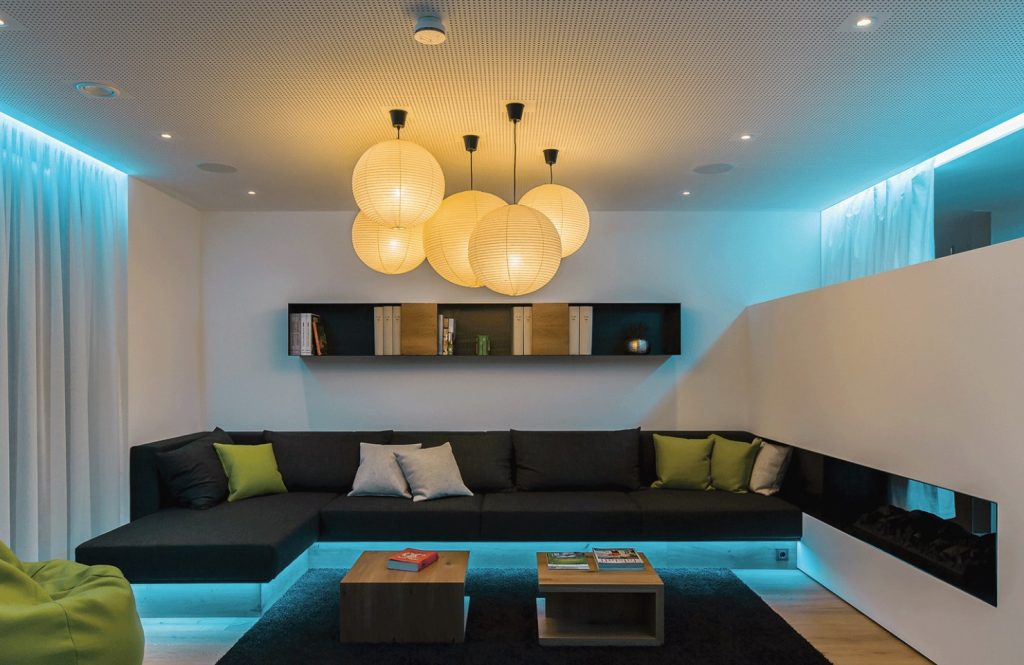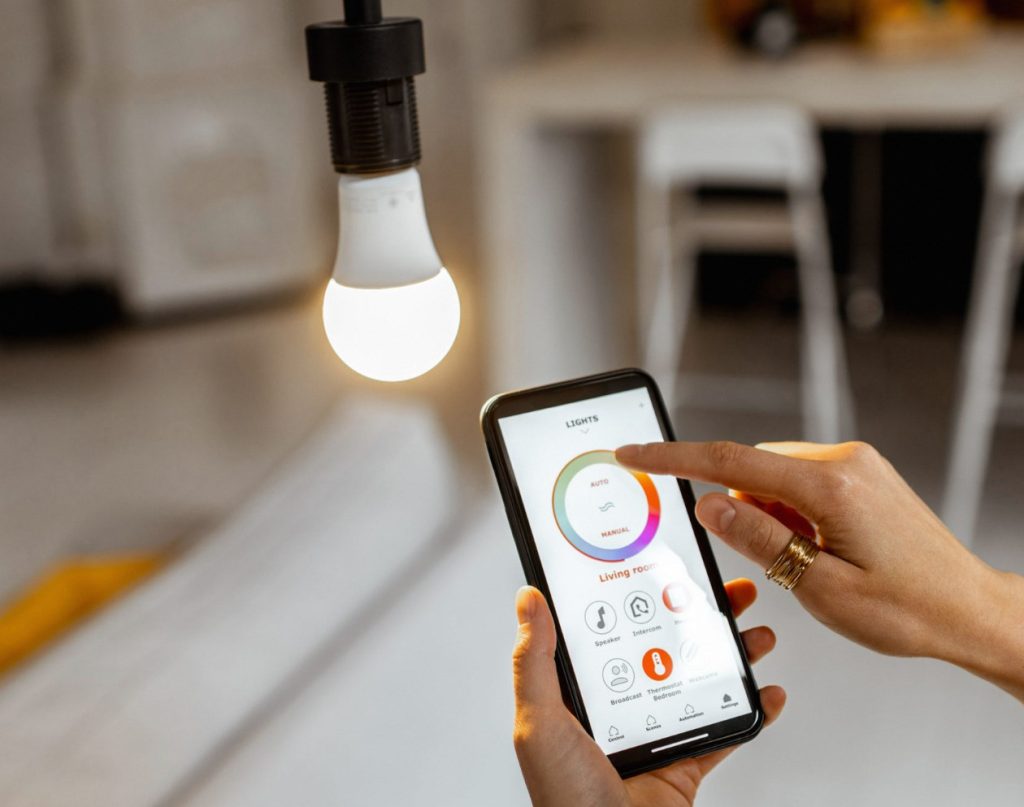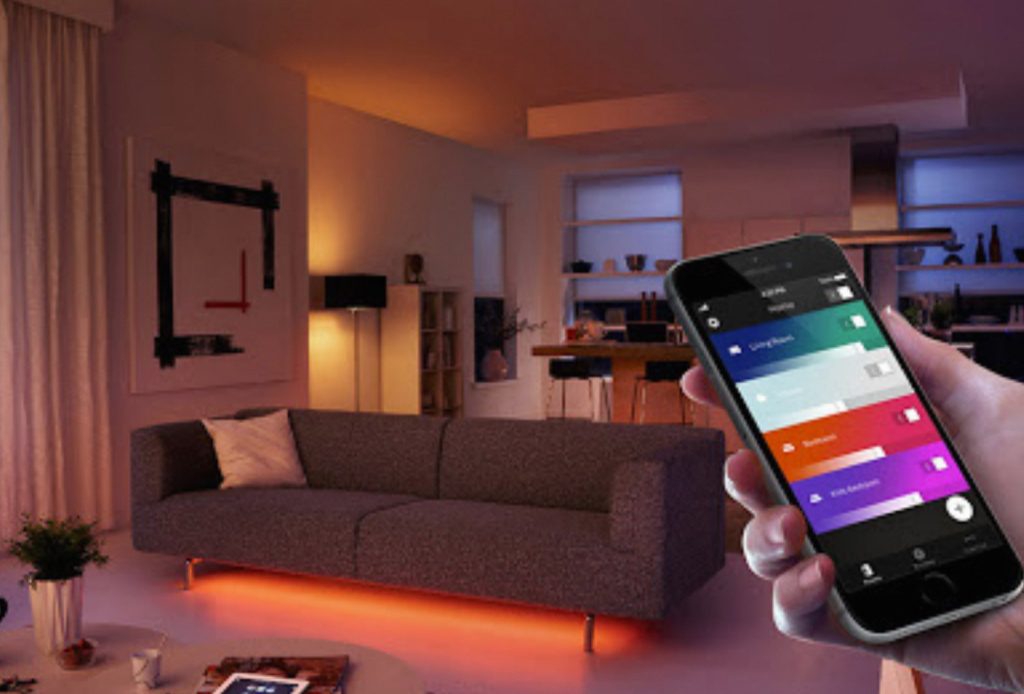The concept of lighting our homes has undergone a dramatic shift. Smart lighting technology transcends the simple act of illumination, offering a transformative experience that merges functionality, aesthetics, and connectivity. This comprehensive guide will delve into the various facets of smart lighting, exploring its core benefits, popular smart lighting products, and key considerations for implementation.

Part 1: Unveiling the Benefits of Smart Lighting
Effortless Control and Enhanced Convenience:
Smart lighting systems offer a paradigm shift in how we control our home’s illumination. Gone are the days of relying solely on traditional light switches. With smart lighting, you can control lights remotely using a smartphone app or even through voice commands via smart speakers. Imagine dimming the lights from the comfort of your couch, scheduling them to turn on before you arrive home, or creating automated routines that adjust lighting based on the time of day.
Energy Efficiency and Cost Savings:
Smart lighting systems are integral in energy conservation and cost reduction. These systems play a significant role in reducing energy consumption and subsequently lowering electricity bills. By automating lighting based on occupancy or integrating with ambient light sensors, smart lights ensure that illumination is used only when necessary, minimizing unnecessary energy expenditure. Moreover, the inclusion of features such as dimming capabilities further enhances energy efficiency, as it allows users to adjust light levels to optimize energy usage. The integration of smart lighting in homes not only brings about convenience and customization but also yields tangible benefits in terms of energy savings and reduced environmental impact. Ultimately, the implementation of smart lighting technology presents a practical solution for users looking to reduce their carbon footprint, positively impact the environment, and achieve cost savings on their electricity bills.

Part 2: Exploring Popular Smart Lighting Products
The world of smart lighting offers a diverse range of products to cater to different needs and preferences. Here are two key categories to consider:
Smart Bulbs:
Smart bulbs are a widely favored and versatile choice for modern lighting solutions. When installed, they seamlessly replace traditional bulbs in existing fixtures, allowing for effortless integration into your pre-existing lighting infrastructure. The appeal of smart bulbs lies in their diverse range of options; available in various wattages, color temperatures, and even color-changing capabilities, they offer users complete control over the lighting ambiance of their environments. With the ability to adjust brightness, color, and scheduling through compatible smart home apps, these smart bulbs provide an unprecedented level of customization and adaptability. Whether you desire warm, soft white lighting for relaxation or bright, cool white illumination for focus, smart bulbs effortlessly cater to your specific needs. Their compatibility with home assistants further expands their functionality, as users can control the lighting with simple voice commands.

Smart Switches:
Smart switches offer a more comprehensive solution, replacing traditional wall switches. They provide control over multiple bulbs connected to that switch, ideal for controlling entire rooms or areas with multiple fixtures. Smart switches can also add features like dimming functionality, even for non-dimmable bulbs.
Part 3: Implementing Smart Lighting: Key Considerations
Before embarking on your smart lighting journey, here are two crucial factors to consider:
Compatibility and Ecosystem:
When considering smart lighting products, it’s important to note that they come from various brands and may utilize different communication protocols. To ensure a smooth and cohesive smart home experience, it’s crucial that the chosen products are compatible with each other and with your preferred smart home ecosystem, such as Amazon Alexa or Google Home. This compatibility factor is fundamental in ensuring that all the elements of your smart home work together seamlessly, allowing for centralized control and effortless integration. By selecting compatible smart lighting products, users can maximize the functionality of their smart home setup and avoid potential issues that may arise from using disparate communication protocols or incompatible devices. This attention to compatibility helps to create a cohesive and unified smart home environment, ensuring that users can fully leverage the convenience, automation, and control features that a smart home ecosystem offers.

Budget and Needs:
Smart lighting solutions come in a variety of price points, which are often determined by the features and functionalities they offer. It’s important to carefully consider your budget and lighting needs when choosing a smart lighting system. For those seeking individual light control, smart bulbs are a more economical option. You can easily integrate them into existing fixtures and control them independently, making them a cost-effective solution for personalized lighting adjustments. On the other hand, smart switches provide centralized control over multiple lights in a room or throughout a house, offering convenience and seamless management. However, they may require professional electrical expertise for proper installation. It’s essential to weigh the benefits and cost implications of each option, ensuring that the chosen smart lighting solution aligns with your requirements, budget, and the level of control you desire over the illumination in your home.
Part 4: Smart Lighting: A Stepping Stone to a Connected Future
Smart lighting serves as a stepping stone towards a more connected and intelligent home. Here are two exciting possibilities that smart lighting unlocks:
Integration with Other Smart Home Devices:

The integration of smart lighting with other smart home devices creates a harmonious and interconnected ecosystem, enhancing the overall efficiency and convenience of home automation. By seamlessly linking smart lighting with other devices, a myriad of possibilities emerge. For instance, envision lights adjusting automatically based on the room’s temperature, which is precisely regulated by a smart thermostat. This integration ensures that the lighting not only meets your illumination needs but also complements the ambient room conditions, providing a seamless and comfortable environment. Furthermore, the coordination of smart lighting with motion-detecting smart security cameras adds an additional layer of security. For example, when the security camera detects motion, it can program the lights to turn on, effectively deterring potential intruders and illuminating the area for improved surveillance. The potential to synchronize smart lighting with other smart home devices indicates the interconnected and enhanced capabilities that can be achieved.
Enhanced Security and Peace of Mind:
Smart lighting systems can contribute to a more secure home environment. Lights can be programmed to turn on when motion is detected, deterring potential intruders. Additionally, scheduling lights to turn on or off while you’re away can create the illusion of occupancy, providing peace of mind.
In conclusion, smart lighting technology offers a transformative approach to illuminating our homes. By incorporating smart lighting solutions, you can experience unparalleled control, convenience, and energy savings. As smart lighting continues to evolve and integrate with other smart home devices, the possibilities for creating a personalized and connected living environment are truly endless.